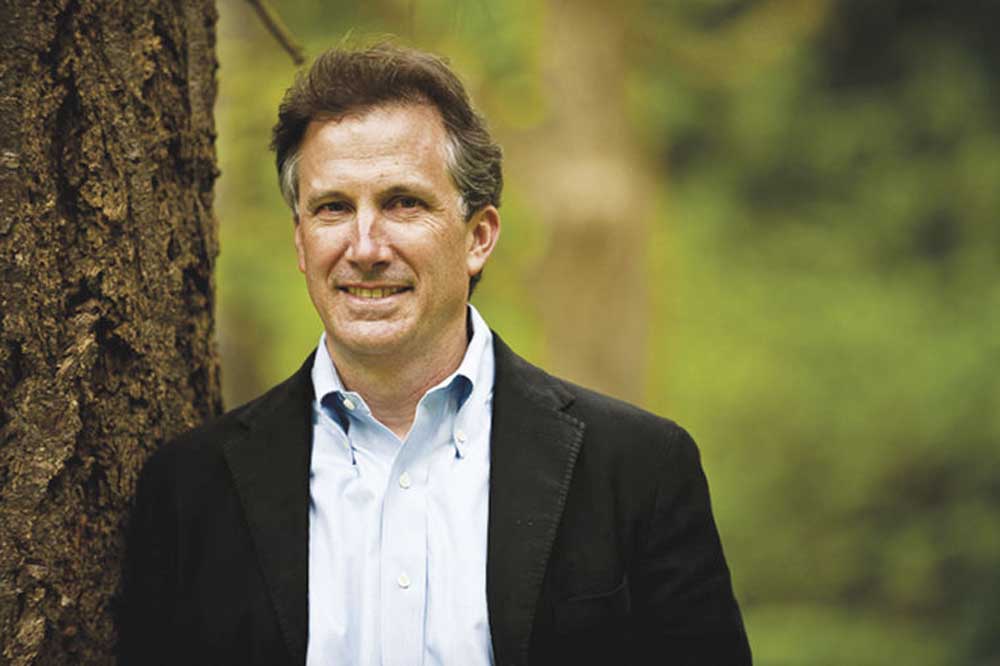Q&A with Tom Tuchmann
Published 5:00 pm Wednesday, March 16, 2011

- Tom Tuchmann of U.S. Forest Capital.
U.S. Forest Capital seems to be at the junction of the economic and environmental forces that are reflected in how forestland ownership patterns are changing. Is that a fair statement?
Yes. We see macroeconomic forces dramatically changing the economic and environmental climate within which forests are owned and managed. More specifically, we believe that there are going to be significant ownership changes over the next 10 to 20 years and not all these new owners want to maintain large-scale working forests. While there have been exceptionally strong disagreements about how forests should be managed over the last 30 years, most people agree that they want to keep these forests working. Our work at U.S. Forest Capital is focused on helping communities, businesses and conservation groups maintain these forests in a way that produces jobs, tax base, fiber, water quality and quantity, wildlife habitat, recreational opportunities, etc. This may sound counterintuitive to some, but we have found that developers can actually work with communities in a way that conserves working forests so that they become part of the solution. They have become a positive part of my clients transactions.
The ownership change here in Clatsop County of Weyerhaeusers sale to the Campbell Group seems to typify a shift that is almost nationwide: away from the vertically integrated industrial forestry company to TIMOs (timber investment management organizations). What do you think will be the next transition in forestland ownership patterns?
A common attribute among many forest asset managers is that they plan to exit their investment. That exit could take place in 5, 10 or 20 years, but there is a good likelihood that they will sell their forest. With 84 percent of the nations industrial timberland having been sold over the last 15 years, there is a strong likelihood that we will see another round of timberland sales in the future. We believe this next wave of timberland sales will be different than that last 15 years. Whereas, integrated companies sold their properties in hundred of thousands to million-acre chunks, for example International Paper sold 4 million acres in one auction, the next wave is likely to see a greater number of sales in smaller parcels of tens to hundreds of thousands of acres.
From my perspective this fragmentation of our industrial forests is to the 21st century what forest practices were to the 20th century. Unlike the battles of the 20th century that pitted timber industry against environmentalists the next wave of land dispositions is beginning to bring these folks together. The key will be to develop financing and governance structures that allow folks to work together and manage for the array of forest benefits.
Will the sale of these smaller parcels present opportunities for conservation groups?
Conservation and community buyers with the financial resources to acquire portions of properties for sale will increasingly have opportunities over the next 10 years. Many of the ideological opposition on either side of the forestry debate is starting to melt away in the context of bigger issues.
One area where we have worked on behalf of our clients is developing new financing tools that help them raise money to buy large ownerships. One tool Community Forestry Bonds requires a clarification to the federal tax code and would allow community groups to borrow funds from tax-exempt bond sales to buy forestland. The property would then be conserved as working forest and sustainable timber harvest would be used to pay back the lenders. The bill has strong support from 80 different groups ranging from the Sierra Club to National Association of Forest Landowners.
If the economy and tax law are driving the transition away from the vertically integrated forest management, environmental anxieties are another force. We hear a lot about carbon credits and the importance of the North American temperate rain forest such as we have in Clatsop County in dealing with global warming. How big a player do you think land conservancies and forest management funds such as Ecotrusts will become?
This is a complex question and here is a three-part answer. First, North American temperate forests are really important in terms of carbon sequestration. Second, carbon sequestration is but one benefit we receive from our forests … there are many others. It seems to me that job number one is keeping large ownerships working so that the carbon, biodiversity, water quality and fiber production engine is protected. Environmental markets like carbon that provide incentives to landowners to continue to manage forests can play an important part in financing working forests, but prices will have to increase significantly to be used at scale. Third, providing a stable regulatory and tax environment will do much to maintain large working forests and yes, for those properties that are not core to an industrial owner and/or have environmental attributes that devalue the property from an investment standpoint, conservation and community groups can have a larger role to play in acquisition and management. We believe this is a good thing as it will provide increased stability both environmentally and economically and it will bring folks together on forest management issues.









